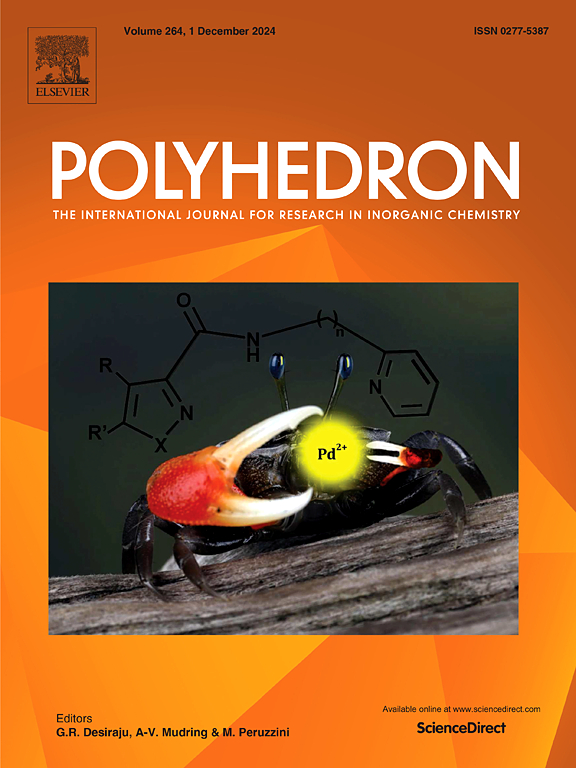Bicyclic [3]ferrocenophanes from reductive couplings of 1,1′-bis(2-acetylvinyl)ferrocene: synthesis, structure, electrochemistry and anti-cancer evaluation
IF 2.6
3区 化学
Q2 CHEMISTRY, INORGANIC & NUCLEAR
引用次数: 0
Abstract
The intramolecular McMurry reaction of a ferrocenyl 1,1′-bis(α,β-unsaturated ketone) proceeds with formation of two carbon‑carbon bonds between the side arms. As a result, chiral bicyclic [3]ferrocenophanes, with cyclopentadiene or cyclopentane rings fused with the bridge, have been formed. The isomeric cyclopentadienes (±)-2a and 2b, as well as cis-diol (±)-3, were isolated and thoroughly characterized by means of 1H and 13C NMR spectroscopy, HR MS, single-crystal X-ray diffraction and cyclic voltammetry. The [3]ferrrocenophanes were tested for anti-cancer activity towards four cancer cell lines (MCF-7, MDA-MB-231, PC-3, K-562). The (p-hydroxyphenyl)boronic acid ester (±)-4, derived from diol (±)-3, displays the highest activity in the micromolar range (31.3 μM, PC-3 cells, 27.3 μM, K-562 cells). Mitochondrial membrane potential studies with (±)-4 suggest its pro-apoptotic properties.

1,1 ' -双(2-乙酰基乙烯基)二茂铁还原偶联的双环[3]二茂铁:合成、结构、电化学及抗癌评价
二茂铁基1,1′-二(α,β-不饱和酮)的分子内McMurry反应在侧臂之间形成两个碳-碳键。结果,形成了手性双环[3]二茂铁,其环戊二烯或环戊烷环与桥体融合。采用1H、13C NMR、HR MS、单晶x射线衍射、循环伏安等方法对环戊二烯(±)-2a、2b和顺式二醇(±)-3进行了分离和表征。[3]对MCF-7、MDA-MB-231、PC-3、K-562等4种癌细胞进行了抑癌活性试验。由二醇(±)-3衍生而来的(对羟基苯基)硼酸酯(±)-4在微摩尔范围内(PC-3细胞为31.3 μM, K-562细胞为27.3 μM)表现出最高的活性。(±)-4的线粒体膜电位研究表明其促凋亡特性。
本文章由计算机程序翻译,如有差异,请以英文原文为准。
求助全文
约1分钟内获得全文
求助全文
来源期刊

Polyhedron
化学-晶体学
CiteScore
4.90
自引率
7.70%
发文量
515
审稿时长
2 months
期刊介绍:
Polyhedron publishes original, fundamental, experimental and theoretical work of the highest quality in all the major areas of inorganic chemistry. This includes synthetic chemistry, coordination chemistry, organometallic chemistry, bioinorganic chemistry, and solid-state and materials chemistry.
Papers should be significant pieces of work, and all new compounds must be appropriately characterized. The inclusion of single-crystal X-ray structural data is strongly encouraged, but papers reporting only the X-ray structure determination of a single compound will usually not be considered. Papers on solid-state or materials chemistry will be expected to have a significant molecular chemistry component (such as the synthesis and characterization of the molecular precursors and/or a systematic study of the use of different precursors or reaction conditions) or demonstrate a cutting-edge application (for example inorganic materials for energy applications). Papers dealing only with stability constants are not considered.
 求助内容:
求助内容: 应助结果提醒方式:
应助结果提醒方式:


